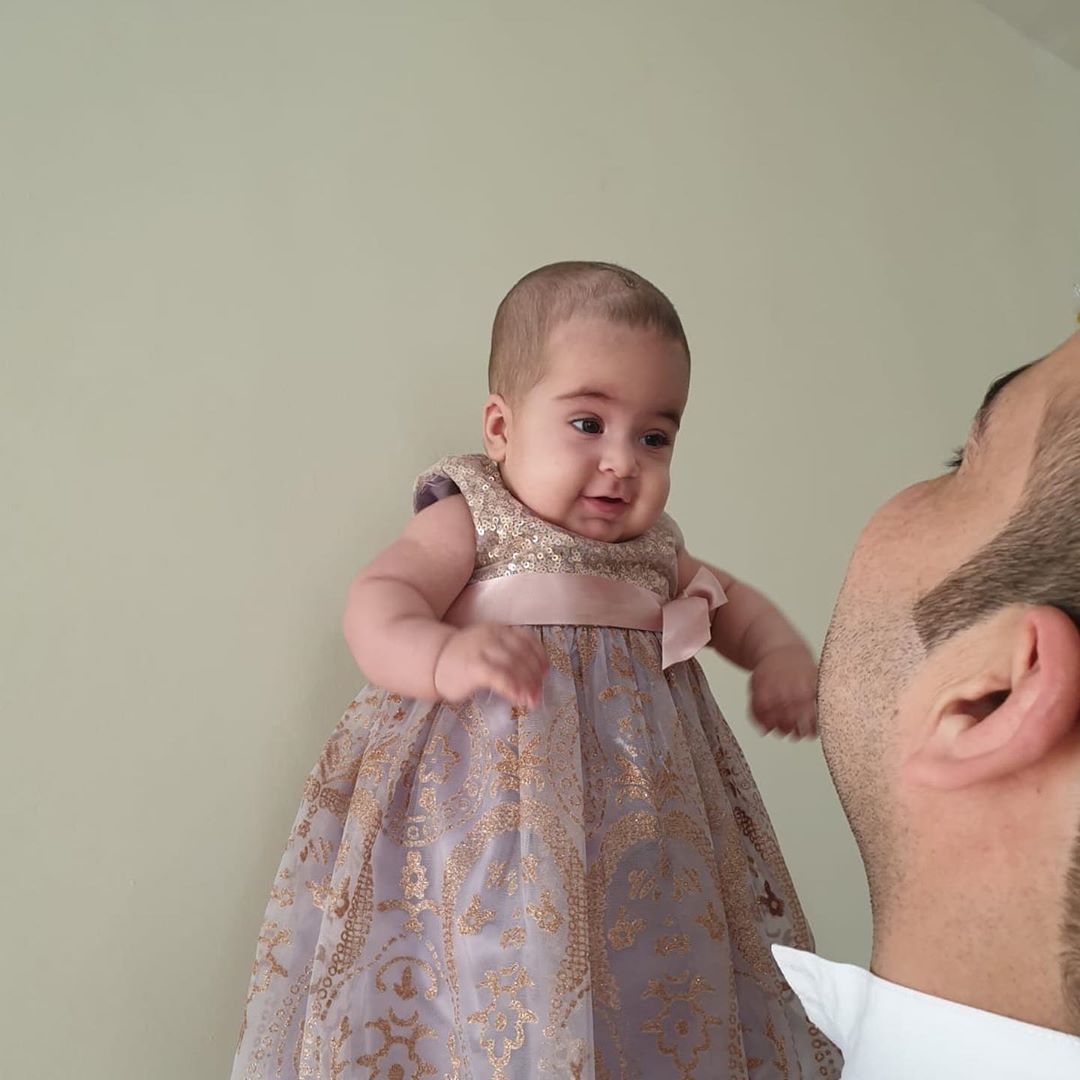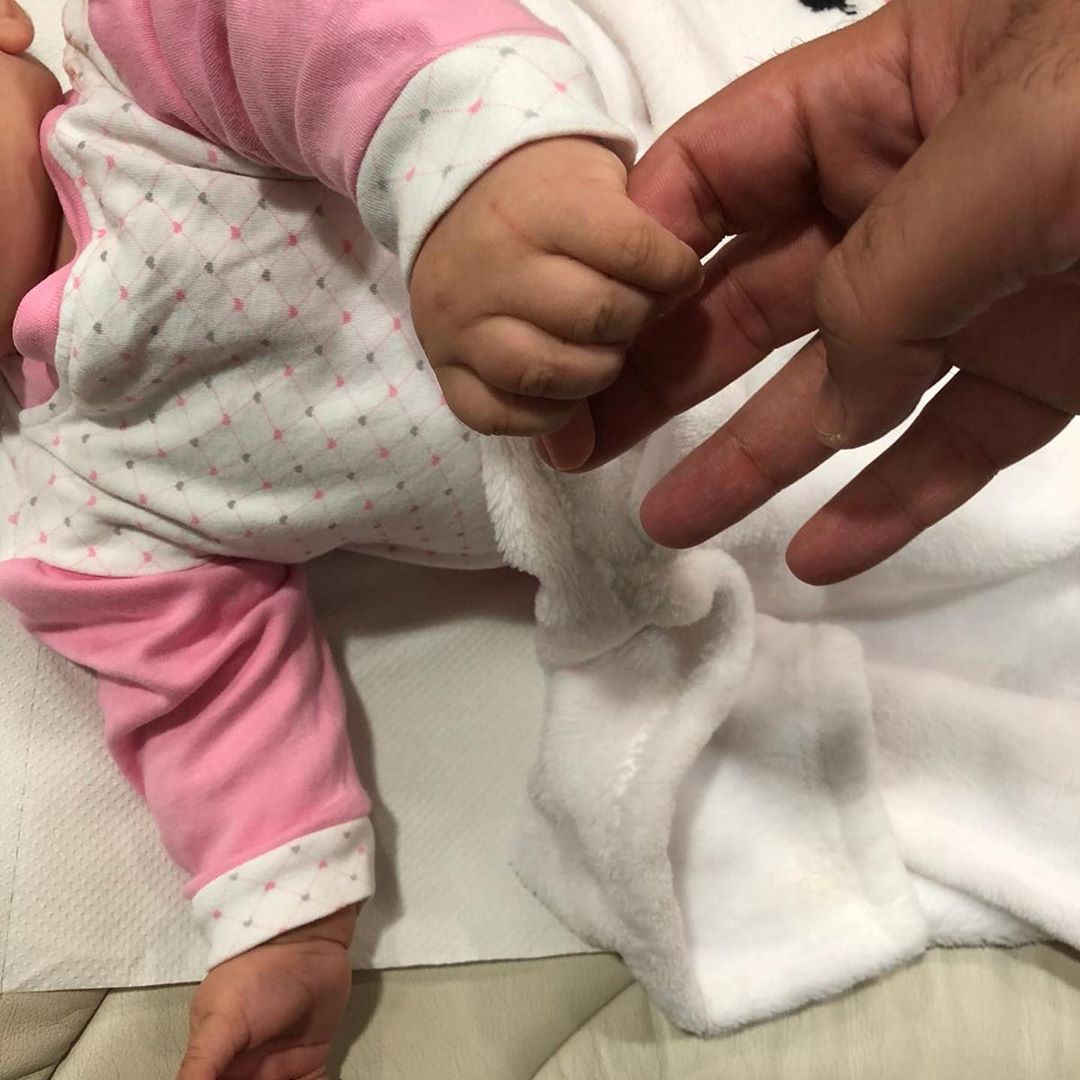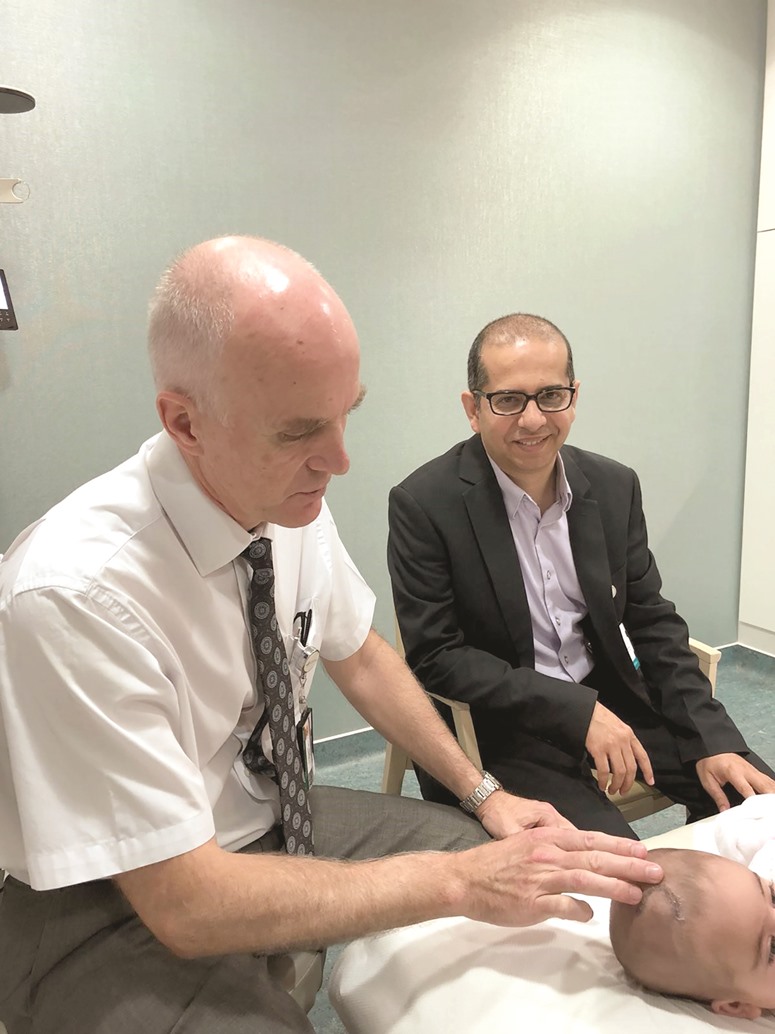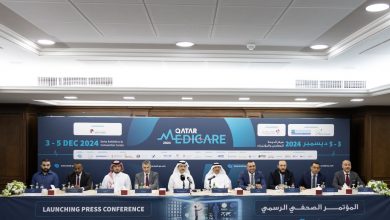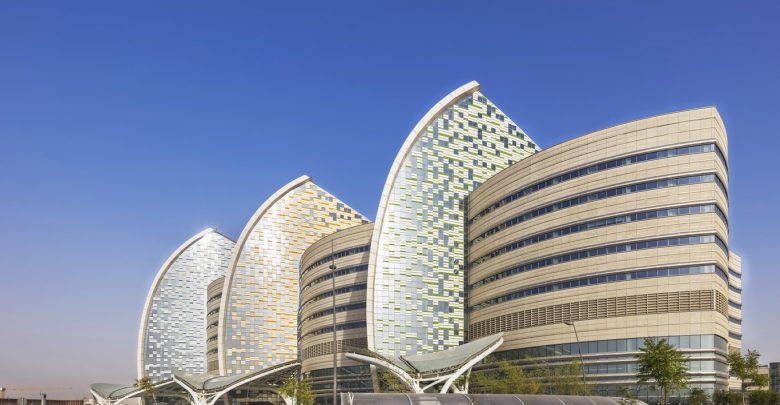
Sidra Medicine conducts keyhole brain surgery on baby
«سدرة للطب» تنجح في إجراء تنظير داخلي لمولودة مصابة باستسقاء في الرأس
Surgeons from Sidra Medicine, a Qatar Foundation entity, have successfully conducted minimally invasive keyhole brain surgery on a baby born with Hydrocephalus.
Hydrocephalus is a condition in which fluids collect in the brain. It occurs in one to two per 1,000 newborns globally.
When the baby, Leen was five weeks old, during her regular newborn check-ups, her primary healthcare paediatrician noticed that the circumference of her head was rapidly growing. It soon surpassed normal sizes. They also noted developmental delays and that she was struggling with her vision.
Leen was immediately referred to Sidra Medicine’s Neurosurgery Department where surgeons, Dr Ian Pople and Dr Khalid al-Kharazi determined that she had hydrocephalus and would need to undergo brain surgery.
The condition is manifested in babies with a bulging fontanelle (the soft spot on the top of the skull) and an abnormal enlargement of the head. Additional symptoms include seizures, sleepiness and frequent vomiting. Infants start to show a lack of interest in their surroundings, their eyes turn downwards and their movements become weak.
Hydrocephalus, if left untreated in babies, can cause severe disabilities or be fatal. However, early diagnosis as well as treatment through brain surgery, allows the majority of children to live healthy and full lives.
Dr Pople, division chief of neurosurgery at Sidra Medicine said, “Most hydrocephalus patients are typically treated by placing a shunt system in the brain. Many people and children with shunts go on to live normal lives but some children have repeated problems with their shunt. However, in Leen’s case, we sought to perform a type of brain surgery that is only feasible in infants – Endoscopic Third Ventriculostomy and Choroid Plexus Cauterisation.”
“This is a minimally invasive surgical procedure that reduces the production of the abnormally excessive brain fluid and creates a bypass for the cerebrospinal fluid in the head, thereby eliminating the need for a lifelong shunt. The combined procedure we performed on Leen, was a first for Qatar and quite possibly the GCC region,” he continued.
In a pioneering surgery on April 29, spanning two hours, the surgeons, used a flexible thin endoscope through a tiny hole in Leen’s skull. The CPC process involved cauterising most of the Choroid Plexus, the part of her brain that produces cerebrospinal fluid. In Leen’s case, the plexus was producing excessive fluid, causing her head to swell. The cauterisation helped reduce the amount of fluid being produced.
Leen was discharged one week after surgery and continues to visit Sidra Medicine’s neurosurgical team as part of her post-operative care and to monitor her physical and mental development.
Leen’s father, Hassan said, “Following the surgery, the physical and behavioural change in our baby is tremendous. From being lethargic and having an abnormal sized head, Leen is now a completely different baby! She is blossoming and is very interactive. Her head size is coming down and she continues to meet all her milestones as any normal baby. We are immensely appreciative of Sidra Medicine that Leen received a chance to live a healthy and normal life. We are also grateful to Qatar Foundation and most of all to the Government of Qatar. What has been created in the country in terms of medical care, infrastructure and facilities, provides hope and inspiration to so many families.”
“We are thrilled with Leen’s progress with normal head growth. Sidra Medicine is one of the few hospitals in the region to have invested in world-leading teams, best-in-class surgical equipment and technologies in such a short span of time. This has helped address the challenge for many young patients who along with their families, previously had to travel abroad to seek specialised treatment and care,” added, Dr al-Kharazi, neurosurgeon at Sidra Medicine.
أجرى جرَّاحو سدرة للطب، عملية جراحية ناجحة «قليلة التوغل» عبر ثقب شديد الصغر في الدماغ على طفلة مولودة باستسقاء الرأس.
استسقاء الرأس هو حالة تجمّع السوائل (السائل المخي الشوكي) في الدماغ. وهو يحدث بنسبة 1- 2 من بين كل 1000 مولود جديد على مستوى العالم.
تتجلى الحالة عند الأطفال بانتفاخ اليافوخ (البقعة الناعمة في الجزء العلوي من الجمجمة) وتضخّم غير طبيعي في الرأس، وتشمل الأعراض الإضافية النوبات والنعاس والقيء المتكرر. يبدأ الأطفال في إظهار عدم الاهتمام بالبيئة المحيطة بهم وتتجه عيونهم إلى الأسفل مع ضعف في الحركة.
إذا تُرك استسقاء الرأس عند الأطفال دون علاج يمكن أن يسبب إعاقات شديدة أو يصبح قاتلاً، لكن التشخيص المُبكر والعلاج من خلال جراحة الدماغ يتيح لمعظم الأطفال أن يعيشوا حياة صحية كاملة.
عندما بلغت لين الأسبوع الخامس من عمرها، وخلال فحوصها الدورية الوليدية، لاحظ طبيب الأطفال في الرعاية الصحية الأولية أن محيط رأسها ينمو بسرعة، بشكل تجاوز الحجم الطبيعي، كما لاحظ الأطباء تأخراً في نموها وصعوبة في الرؤية.
أُحيلت لين على الفور إلى قسم الجراحة العصبية في سدرة للطب، حيث جزم الجراحان الدكتور إيان بوبل والدكتور خالد الخرازي أنها مُصابة باستسقاء الرأس وتحتاج إلى إجراء عملية جراحية في الدماغ.
وقال الدكتور إيان بوبل، رئيس قسم الجراحة العصبية في سدرة للطب: «يتم عادة علاج معظم مرضى استسقاء الرأس عن طريق وضع نظام تحويل دماغي. يواصل العديد من الأشخاص والأطفال الذين يملكون تحويلة دماغية الحياة بشكل طبيعي، لكن بعض الأطفال يعانون من مشاكل متكررة في تحويلاتهم.
وأضاف: في حالة لين، سعينا إلى إجراء نوع من جراحات الدماغ التي لا تجدي إلا عند الأطفال الرضع – فغر البطين الثالث بالمنظار وكيّ الضفيرة المشيمية (ETV / CPC). هذا إجراء جراحي طفيف التوغل يُقلل من الإنتاج المفرط غير الطبيعي للسائل الدماغي (CSF) ويخلق مجرى للسائل للمخي الشوكي في الرأس، وبالتالي يلغي الحاجة إلى تحويلة دماغية لمدى العمر. كان الإجراء المشترك هو الأول من نوعه في قطر، وربما في منطقة مجلس التعاون الخليجي بالأكمل».
وفي عملية جراحية رائدة امتدت ساعتين، استخدم الجراحون منظاراً رفيعاً ومرناً تم تمريره عبر ثقب صغير في جمجمة لين. تضمنت عملية CPC كيّ معظم الضفيرة المشيمية، وهي الجزء من الدماغ الذي ينتج السائل المخي الشوكي. كانت الضفيرة تنتج سائلاً مفرطاً في حالة لين، مما تسبب في تضخم رأسها. ساعد الكيّ في تقليل كمية السائل الذي يتم إنتاجه.
وقد خرجت لين بعد أسبوع واحد من الجراحة، ولا تزال تزور فريق الجراحة العصبية التابع لسدرة للطب كجزء من رعايتها بعد الجراحة ولمراقبة تطورها البدني والعقلي.
